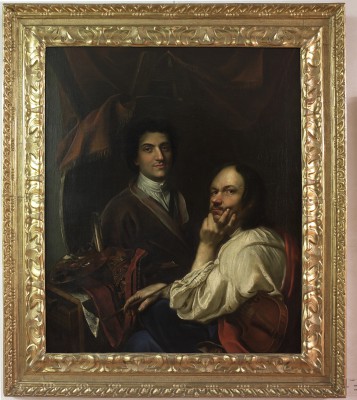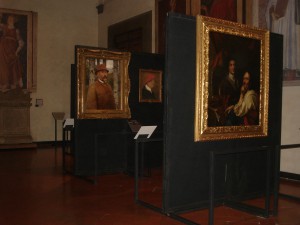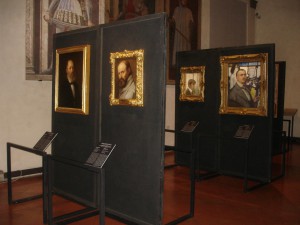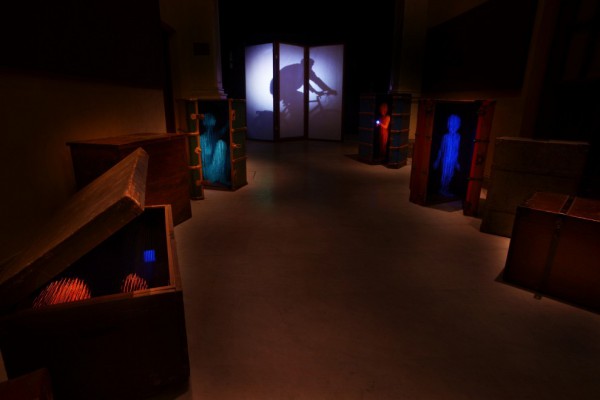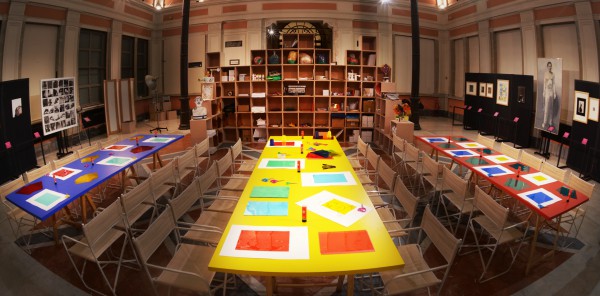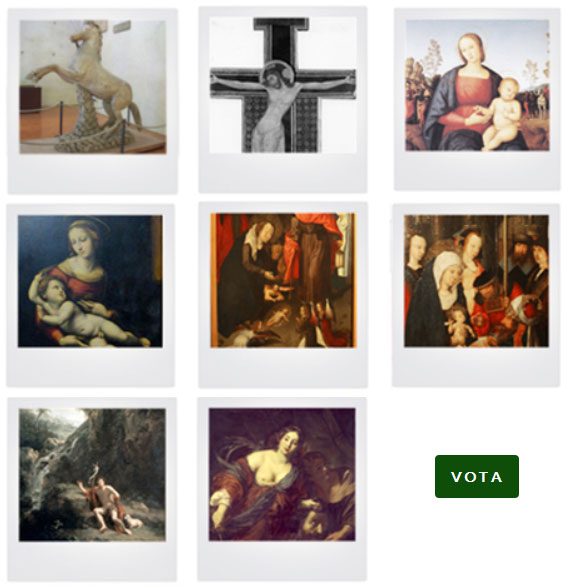
This year, as a pilot program, the Italian Ministry for Tourism and Cultural Heritage and Activities opened some of its sites for late openings on the last Saturday of the month, including the Uffizi. In Florence, the other two sites open are the Accademia Gallery and the Medici Chapels.
Since its start, more than 70,000 visitors have taken the opportunity for some late-night art appreciation across all of the sites open for the occasion in Italy.
The funds collected during “A Night at the Museum” goes to the new initiative “Art Helps Art“, where the admissions fees paid by visitors on these Saturdays help directly finance the restoration of a work of art in Florence, Naples, Rome or Venice. The Italian Ministry is inviting participation in the form of votes to decide which one of 8 works of art gets restored.
While the page is only in Italian, you can still cast your vote (you’ll have to enter an Italian region – you can enter “Toscana” – to vote), especially if you participated in “A Night at the Museum”. The first two works on the list are in Florence: the first one is a Roman equestrian sculpture housed in the Niobe Hall in the Uffizi Gallery and the second an important 13th-century Florentine crucifix housed at the Accademia Gallery.
You can vote up until November 15 at:
http://www.valorizzazione.beniculturali.it/arteaiutaarte-votazione.html
Go ahead and cast your vote now!
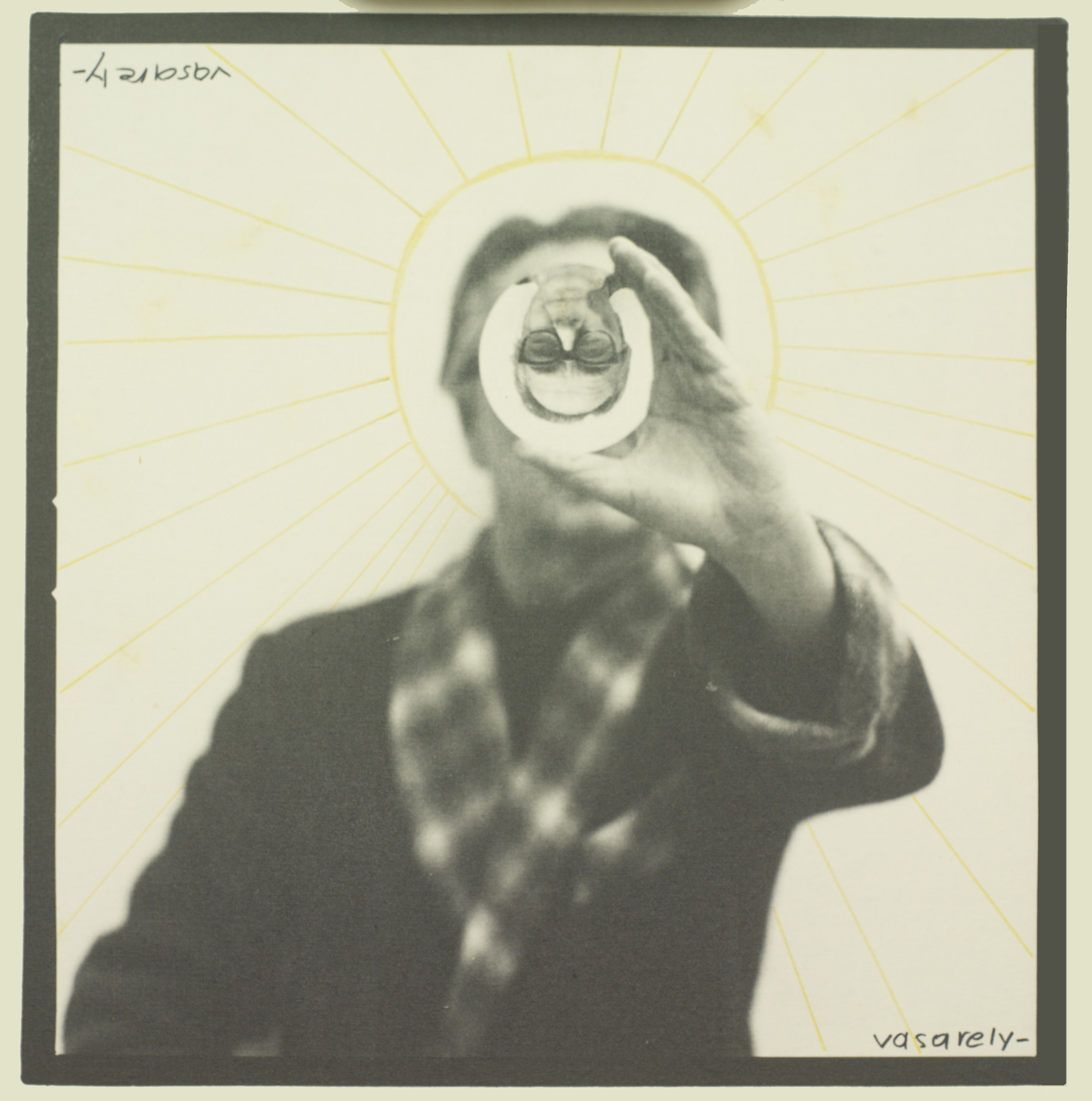
The temporary exhibition showcases 23 works of art from the Uffizi Gallery’s collection of self-portraits, many of which were bought at the end of the 18th and start of the 19th centuries, although there have been many more recent additions.
This particular exposition is dedicated to the memory of Miklós Boskovits, a well-know Hungarian art historian that passed away in 2011 who taught in Florence’s university for decades. It is also a recognition of the friendship between Italy and Hungary that is being celebrated this year with the larger exhibition being held at the San Marco museum. The exhibition is the result of collaboration between Hungarian and Italian art historians with a lot of research and interesting information being published in the exhibition’s catalog.
The first self-portrait that entered the Uffizi’s collection was that of Károly Markó senior, in 1872; the last, arriving in 2009, is that of János Urbán (1934-) who lives and works in Switzerland. The oldest portrait is that of János Kupeczky (1667-1740), who in the first era of Romanticism was considered the major Hungarian artist of the 17th century.
The majority of the Hungarian portraits were donated to the Uffizi Gallery by the artists themselves.
Each of the paintings has its own story on how it came to be part of the collection, and by stopping by San Pier Scheraggio you will have a chance to learn some of them!
IN SUMMARY:
Uffizi: Self-Portraits of Hungarian Artists at San Pier Scheraggio
October 11 – November 30, 2013
Open Tuesday through Friday, 10am-5pm – Free entrance

At the Poste Reali space of the Uffizi Gallery, the “Laboratorio Novecento” is offering schools and families the opportunity to visit “Incarnations”, a temporary exhibit giving visitors the chance to see lesser known works of art coming directly out of the Uffizi’s deposits. The theme is tied to the body: its perception, interpretation, the camouflage and transfiguration of ourselves by contemporary artists.
As an example, students that participate in the activities will come face to face to the hollow, engraved face of Käthe Kollwitz as well as the morphological geometric shapes created by Fernand Léger, the fragmentation of the body by Elisa Montessori and the material deformation by Berlinde de Bruyckere. There is also the “death” mask by Yoko Tadanori and the donkey ears by Jan Fabre, as well as the comic and graphical transpositions by Andy Warhol and the lucid geometric creations by Francesca Woodman.
The hands-on workshop will allow students to takes the various currents on exhibit and re-elaborate with their own vision an interpretation of their body, to create their own unique “pop art” self-portrait!
DETAILS
Laboratorio Novecento – “Incarnations“
Reali Poste degli Uffizi
from October 29 through November 30, 2013
Student groups participate in activities from 10 to noon Monday through Friday.
Families (as well as adults in general) can participate at no cost on Saturdays at the same time, 10-noon with the following schedule:
10-noon on November 2nd, 16th, 23rd and 30th and
3-5pm on November 9th.
The exhibit can be visited by the public in general at other times.
To participate in the workshops, you have to reserve your visit by emailing didatticacontemporanea@gmail.com or calling Monday and Friday between 9am and 2pm the following number: 370-3157620.

As part of a pilot program started this summer, the Uffizi remains open the last Saturday of the month until 11pm, to allow visitors more time to spend at the museum.
So that means this Saturday, October 26, and again on November 30th and December 28th, visitors will be able to plan a visit to the Uffizi later in the evening instead of up until 6:30pm.
In Florence, the Accademia Gallery and Medici Chapels are also participating in this initiative.
Normal admission applies on these nights.
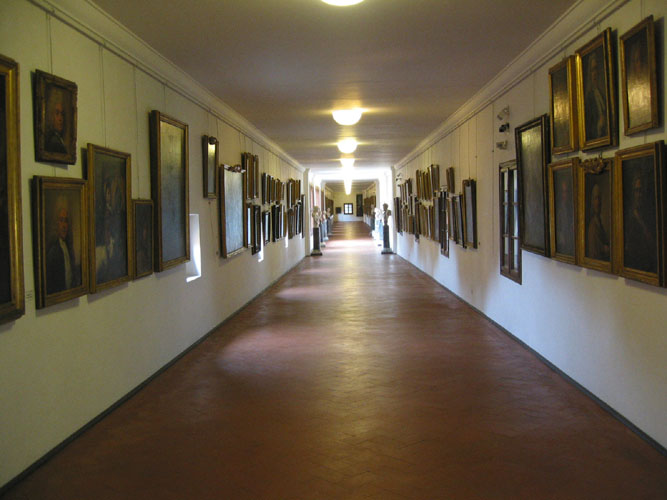
A new series of self-portraits by both Italian and foreign artists that are part of the Uffizi Collection as being added to the last section of the Vasari Corridor. As a consequence, the last section of the Corridor is closed from September 2 – 27, 2013.
Any groups visiting the Corridor will reach the window that looks into the Church of Santa Felicità and will then have to return to the Uffizi Gallery to exit.

In the Red Rooms at the Uffizi, or at the Ammannati courtyard at the Pitti Palace, at the Silver Museum, at the Bargello, Accademia Gallery or Medici Chapels or even in the Vasari Corridor… how about hosting a dinner party in one of these settings? Or a cocktail party, concert or play? How about a fashion show or hosting a conference?
It is possible, and has been possible for the last 20 years, that local boards responsible for mainlining Italy’s most prized national treasures and monuments have been able to “rent out” historical and monumental spots to private parties, as long as the concession guaranteed the conservation of the monument and the use was “compatible” with its historical and artistic nature.
So what’s new? In Florence, the Polo Museale that governs State museums such as the Uffizi, Accademia and Boboli gardens is debating setting up an actual price list. Here’s some of the points in the list:
– visit the Uffizi and get it all to yourself on its day of closure to the public: €8000
– cocktail party: at the Uffizi, €5000; at the Boboli gardens in the Piazzale della Meridiana €7000, and €10000 for the Ammannati Courtyard at the Pitti Palace
– fashion show at the Costume Gallery at Pitti €20,000 or at the Uffizi for €150,000
Funds could go to cover museum activities, restorations and even general expenses in this day and age when funds are scarce.
The news come a few weeks after the City of Florence rented out Ponte Vecchio to the Ferrari who hosted a special dinner for Ferrari owners… while the bridge was closed off to everyone else.
For now, these are just proposals and nothing is set yet… what do you think? Should national monuments be available for rent? Should the state or city, tutors of these public treasures, offer them to those who can pay while denying access to others?
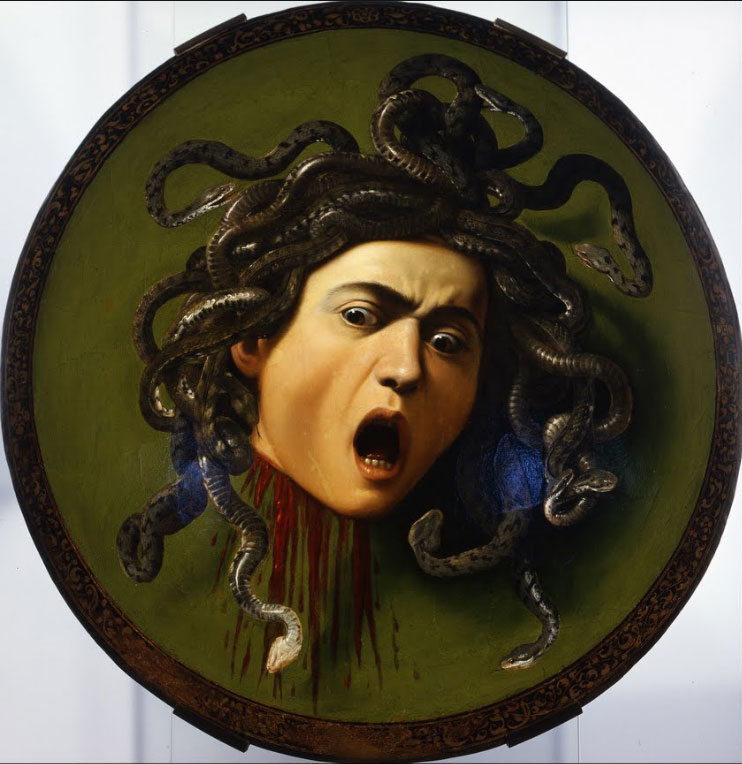
Visitors to the Uffizi today we’re surprised to see Caravaggio’s Medusa along with the rest of the paintings housed in Hall 81 in a different hall than expected.
Yesterday, in fact, staff at the Uffizi were hard at work moving the works of art during the one day of the week the museum is closed to the public. In the video below, you can witness the move of Caravaggio’s Medusa.
Artemisia Gentileschi’s “Judith and Holofernes” and other works by the Caraveggesque painters also made the move to the new rooms found immediately after the temporary exhibit dedicated to Grand Prince Ferdinando de’ Medici in the short end of the Uffizi running parallel to the Arno river. So even if you’re tired by the time you reach this part of the museum, take a moment to stop and admire these fine masterpieces of art!

On Tuesday, June 25, the new exhibition dedicated to the Grand Prince Ferdinando de’ Medici will open at the Uffizi as well as 6 new rooms dedicated to “Modern Mannerism”.
The new spaces include 17 for exhibitions and 6 as part of the main collection of the Uffizi. The new rooms are found after the “red rooms” open last year dedicated to 15th century Renaissance works. The new rooms are dedicated to:
– room 68 – artists working in Rome during the first half of the 15th century
– room 71 – Correggio
– room 74 – Parmigianino
– room 75 – Giorgione and Sebastiano del Piombo
– room 83 – Tiziano
– room 88 – painters from Lombardy, in particular Moroni, Lotto and Savoldo
The new spaces also include new corridors and bathrooms.
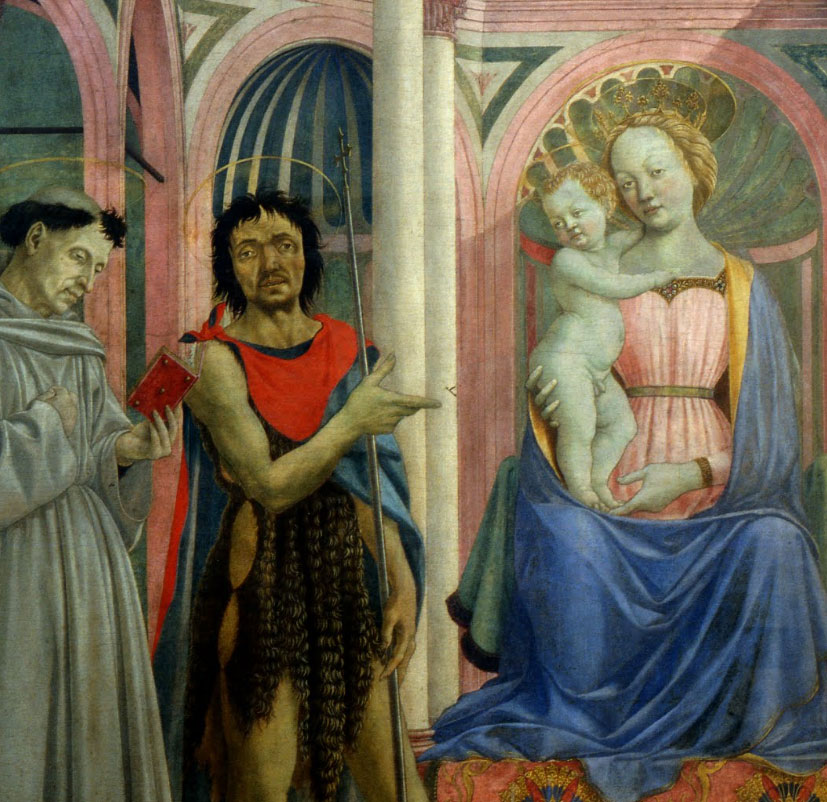
June 24 is the feast day for Florence’s patron saint, St. John the Baptist, and this year it falls on a Monday, day the the Uffizi is generally closed. But thanks to a special project financed by the Ministry of Italy’s Cultural Patrimony, the Uffizi will have a special opening on June 24, open all day from 8:15 to 6:50pm.
Thanks to this project, several other Italian state museums in Florence will also be open on June 24. These are:
– the Medici Chapels
– the Last Supper by Ghirlandaio at Ognissanti
– the Palazzo Davanzati
– the Church and Museum of Orsanmichele
– the Medici Villas at: Poggio a Caiano, La Petraia, the garden of the Medici villa of Castello, and the villa at Cerreto Guidi.
Thanks to the work of volunteers from the Friends of Florentine Museums, the church and museum of Orsanmichele for the special occasion will remain open longer until 9pm.

A few days ago, the new minister for Italy’s Cultural Patrimony and Activities Massimo Bray (Ministero per i Beni e le Attività Culturali) extended the right of free entry to Italian state museums and historical sites to all non-EU minors under 18 years old.
This is wonderful news: up to now, all EU minors under 18 could enter free into state museums but families from outside of the EU visiting Italy had to pay full price entrance tickets for their children. This meant a pretty hefty overall family price to visit monuments and museums in Italy, Italy’s main attraction for visitors worldwide.
This includes the Uffizi Gallery in Florence, as well as the Accademia, the Pitti Palace, the Bargello, the Medici Chapels…. if you’re wondering about any others across Italy, you can search on the MiBAC site for a complete list.
The decree has yet to enter effect but in the meantime the Minister has asked all museums to start applying the new rules and allowing non-EU children to enter free. Here is the official press release saying so: print it out and carry it along with you to show at museum entrances in case the present staff have not yet seen it!
UPDATE: Please note that while all children under 18 qualify for free entry, if you buy advance tickets you still pay for the online commissions and booking fees for those tickets.









